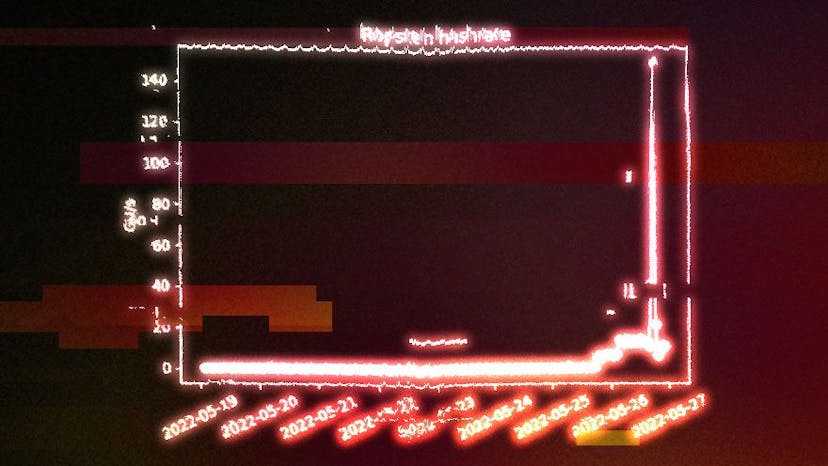Ethereum Miner Tries to Expedite Testnet Merge By 2 Weeks
Ethereum developers foiled a “mischievous” miner’s attempt to expedite Ethereum’s transition to Proof-of-Stake on a public testnet by two weeks. Developers expect Ethereum’s Eth2 Beacon Chain to merge with Ethereum’s mainnet this autumn. The transition, known as “The Merge”, will change the chain to Proof-of-Stake consensus and abandon Proof-of-Work miners. Ethereum’s developers want to trial…
By: Samuel Haig • Loading...
DeFi
Ethereum developers foiled a “mischievous” miner’s attempt to expedite Ethereum’s transition to Proof-of-Stake on a public testnet by two weeks.
Developers expect Ethereum’s Eth2 Beacon Chain to merge with Ethereum’s mainnet this autumn. The transition, known as “The Merge”, will change the chain to Proof-of-Stake consensus and abandon Proof-of-Work miners.
Ethereum’s developers want to trial the merge on public testnets first, and have chosen Ropsten as their initial target.
To do so, they coded a “difficulty bomb” into Ethereum and its testnets. When it explodes, mining will become so difficult that the network will be compelled to transition to Proof-of-Stake. The Ropsten bomb explodes at a specific block height, which the devs calculated would be on June 8.
But on May 26, Twitter flooded with posts flagging that the Ropsten Merge was suddenly on track to go live on May 27 — 13 days ahead of schedule, and three days before the Beacon Chain was scheduled to launch on Ropsten.
Ropsten is currently slated to hit TTD (merge) in 16 hours. This is 13 days before expected, and I assume there will be an intervention (?)https://t.co/vPoyQapFop
Thanks to @mrabino1 for the heads up!
— superphiz.eth ??? (@superphiz) May 26, 2022
Ethereum core dev Preston Van Loon attributed the sudden change in schedule to a 100x increase in hashing power on Ropsten between May 25 and May 26. The spike in hashrate sped up the production of blocks, meaning miners were predicted to trigger the difficulty bomb far sooner.
Ben Edgington, the founder of Eth2 client Teku, blamed the spike in hashrate on a “mischievous miner.” Another core dev, Tim Beiko, chalked the incident up to low hashrates on Ethereum’s testnets.
Devs foiled the errant miner by delaying the difficulty bomb to a later block height. The only consequence is that validators who have already downloaded an update to the Ropsten Merge client will have to upgrade again.
Core developer Marius Van Der Wijden that this couldn’t happen on Ethereum’s mainnet because it would be too expensive for a miner to sharply increase Ethereum’s hashrate.
Advertisement
Get the best of The Defiant directly in your inbox 💌
Know what matters in Web3 with The Defiant Daily newsletter, every weekday
90k+ investors informed every day. Unsubscribe anytime.